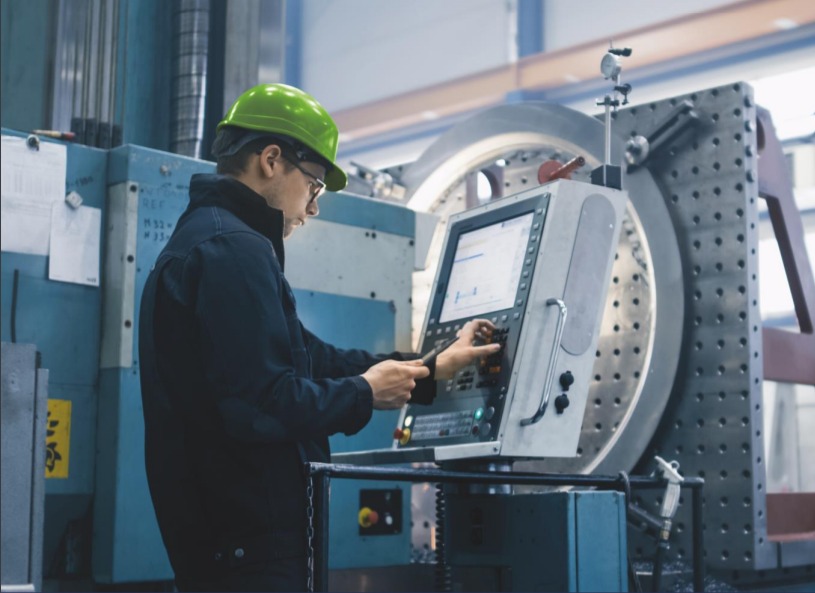Human errors are costly for any industry, but in mining with its expensive equipment their price is enormous. Artificial Intelligence (AI) will not replace humans in the mining industry completely, but will help to cut their errors considerably, Anton Potapov, CTO at VIST Group (part of ZYFRA Group), told IM.
“Productivity in the mining sector has been a constant headache for the executives and stockholders as it has been declining and continues to decline. On top of it the industry faces several challenges, which, according to Deloitte analysts, include price volatility, geopolitical tensions, tariffs concerns and looming asset shortages. It means that the mining sector has to find new options for greater growth than seen in the past decades, and one of the opportunities is to cut the consequences of human errors using AI technologies.”
“In 2019 and during the next five years the mining sector will be looking at the solutions offered by the AI; some of them are already being implemented and have proved to increase efficiency and profitability of the sector, while other ones are being tested. We believe that the following products will be trends of AI implementation in the mining industry: interpretation of big data; logistics and staff control; machinery control; granulometry and interpretation data from equipment.”
VIST CTO Potapov highlights the following AI areas that will drive change in mining:
1. Big data and their interpretation. During the past couple of years AI has learnt to predict tasks that have not arisen yet and find solutions to them. A long period of data collection preceded it: AI products need information about thousands of working hours of dump trucks, mining excavators and bulldozers, to be able to make non-standard decision. Such tools already exist and soon we are going to see their industry-wide adoption and learn what tasks they are able to solve. Chile’s Codelco, the world’s biggest copper producer, is implementing AI into its mines to monitor the health of mining equipment and ensure that operations run efficiently. This product was developed for Codelco by Uptake (a Chicago AI company), and over the next ten years the Chile copper producer intends to automate the operations of its mine fleets and processing plants. Stoilensky GOK, part of NLMK and the second largest producer of iron ore concentrate in Russia, has been implementing mine management solution, developed by VIST Group. This system integrates fleet management with mining and processing management and enables Stoilensky to cut fuel consumption by 12%, boost railway transport productivity by 20%, and also increase speed of dump trucks and tire mileage.
2. Logistics and Staff Control. Dump trucks, excavators and other mining machinery are expensive, and any damage to them comes at a great cost to the company. Panasonic was among the first AI developers to design drowsiness-control technologies that help drivers who feel tired not to lose concentration. This technology has been adjusted for the mining industry and now is now widely used in it. Driver’s drowsiness exacerbates the risk of accidents and damage both to his health and to the expensive machinery. When the driver is on the verge of falling asleep, it is usually too late: solutions are needed to help the driver stay awake, and if this is not possible, replace the driver before the accident occurs. Existing AI solutions are able to monitor the driver’s reactions and to help him stay comfortably awake. Another option to improve logistics is eliminating trucks’ superfluous turns and allow them to complete more working cycles and decrease downtime. This solution developed by VIST Group enables dump trucks to go into shuttle mode that also reduces tyre wear and route time. The autonomous dump truck is being tested in Khakassia.
3. Machinery Control. AI is applied for machinery self-check based on data from sensors. For example if one of the excavator’s bucket teeth gets broken, and the incident goes unnoticed, the excavator will continue working, but the broken tooth might obstruct the crusher. Clearing a crusher obstruction is a dangerous process that requires much caution due to the tremendous amount of stored kinetic energy. The best way to deal with the excavator’s broken parts is to avoid the situation altogether, but there are no solutions yet that allow to notice the tooth when it is just going to break. In 2018, Vancouver-based Motion Metrics launched its tooth monitoring system LoaderMetrics. Using a rugged thermal camera and a sophisticated computer algorithm, the system is able to notice the incident in the real-time mode and warn the excavator operator and the dispatcher about it. It identifies teeth that have broken and fallen into the bucket, which can end up mixed in with ore. To do this, algorithms analyse video-frames to tell when the tooth went missing. The high accuracy of such algorithms makes sure that the broken tooth is found before it gets into the crusher.
4. Granulometry. This goes together with machinery control. Coal and ore are extracted from deposits in pieces of uneven size and weight, and oversized rocks can also obstruct crushers. Such incidents can be prevented, because AI has different options of monitoring rock size to ensure that oversized bits do not get into the crusher.
5. Unmanned Technologies. This is probably the largest area of AI application. To diminish the risk of human error, AI can be used to interpret data from smart sensors and machine interconnection. Norwegian energy giant Equinor (former Statoil) has recently launched the world’s first fully automated oil and gas platform. This platform will ensure elimination of cyberrisks and personnel safety. VIST Group’s experience also shows that unmanned technologies significantly improve operational safety and efficiency, as well as staff security. It is testing at the Tungus coal basin (Siberia) an unmanned drilling technology that will cut the number of staff involved in hazardous and dangerous work and reduce operational costs. Other unmanned technologies that help to reduce costs, enhance efficiency and increase security include robotic drilling systems, in-pipe inspection robots and unmanned aerial vehicles.











